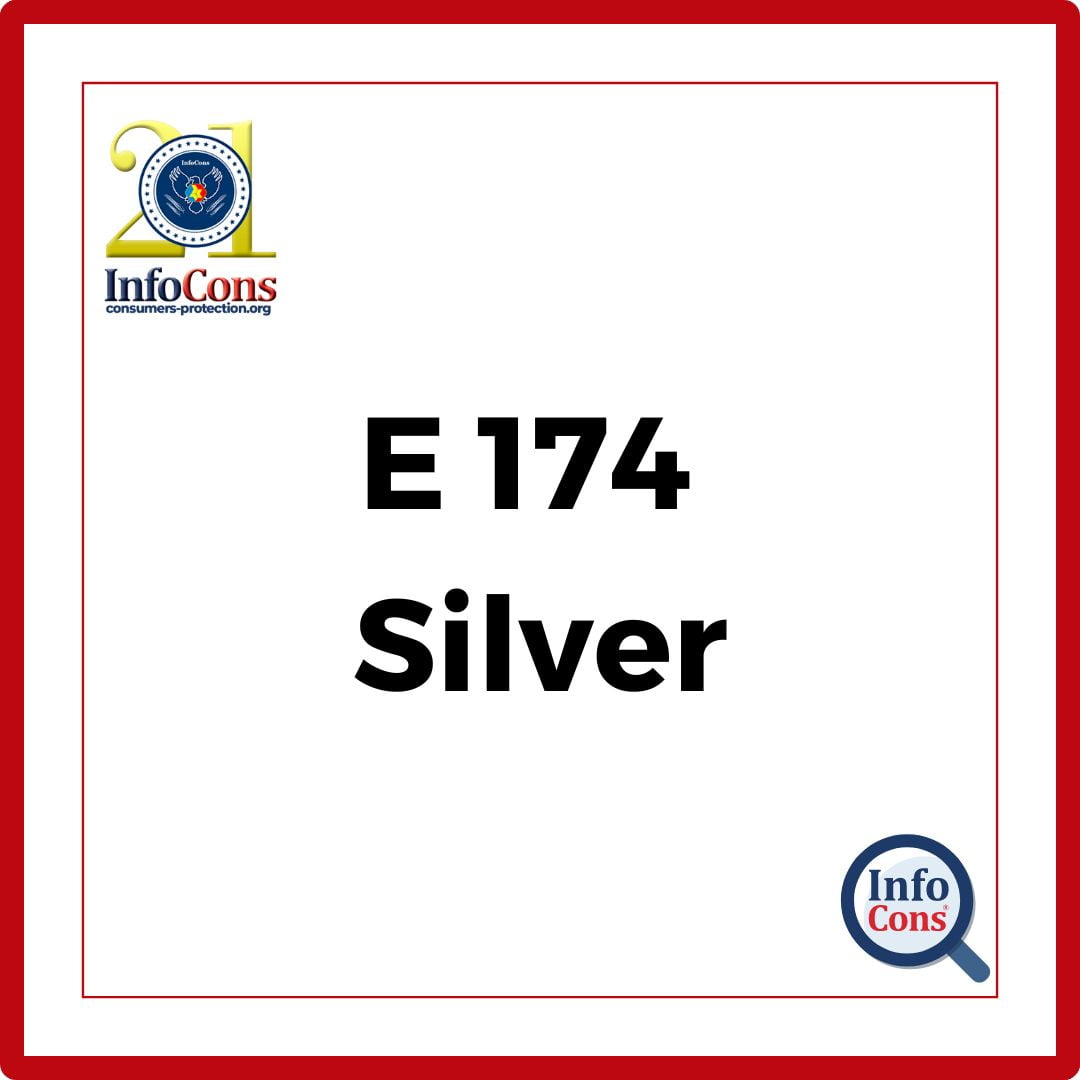
What is food additive E 174 Silver ?
E174, commonly known as silver, is a food additive that imparts a unique metallic sheen to various food products. The food additive E174 has captivated both the food industry and consumers.
Silver is a precious metal with a long history of use in jewelry, coins, and various industrial applications. E174 primarily serves as a coloring agent, providing a decorative and luxurious appearance to foods.
When used as a food additive, silver is typically in the form of a fine pure metallic powder or flakes, ensuring it meets specific purity and safety standards for the consumers.
Do you know what food additive E 172 is ? InfoCons Consumer Protection informs you !
What is the recommended daily dose ?
The safety of the food additive E174 has been extensively evaluated by food safety authorities. The European Food Safety Authority (EFSA) concluded that the available toxicological studies for evaluating the safety of silver (E 174) as a food additive did not allow for the establishment of a maximum allowable dose.
In the European Union, the use of E174 is limited to certain categories of foods. For example, in confectionery products, the concentration is restricted to ensure consumer safety.
Read also – E162 Betanin. InfoCons Consumer Protection informs you in which food products this food additive can be found.
In which products is the E 174 additive found ?
E174 is used in various food products to create an attractive metallic finish. It is commonly used in:
- Confectionery products: dragees, candies, and chocolate.
- Baked goods: cakes and pastries, especially for weddings and anniversaries.
- Beverages: Some luxury liqueurs and spirits contain silver particles to enhance their aesthetic appeal.
Did you know What Do Food Labels Reveal ? Why Is It Important to Read Them Carefully ? InfoCons Consumer Protection informs you!
Contraindications and risks
Silver, in its metallic form, is considered relatively inert and non-toxic. However, exposure to high levels of silver compounds can lead to a condition called argyria, characterized by a blue-gray discoloration of the skin.
Although E174 is considered safe for consumption in regulated amounts, there is ongoing debate regarding the potential health risks associated with chronic exposure to silver. Some experts argue that the cumulative effects of consuming foods containing trace amounts of silver from various food sources require further investigation.
With InfoCons Consumer Protection App you can Scan the barcode . Learn what you eat .
In conclusion, E174, or silver, represents a fascinating colorant in the art of culinary, culture, and science. Although it adds a touch of elegance and opulence to foods, its use is not without controversy and challenges. As the food industry continues to evolve, the role of E174 will likely develop further, balancing consumer desires with safety and sustainability standards.
Look for products that have a cleaner label or use natural additives. By installing Consumer Protection InfoCons App and scanning the barcodes of food products, you can find out the number and type of food additives they contain.
Sources:
https://www.efsa.europa.eu/ – The European Food Safety Authority (EFSA)
Author – Cosmina Nițu
Master in Nutrition – Infant and new born nutrition
InfoCons – European Organization for Consumers Protection and Promotion of Programs and Strategies , a full member of the World Organization Consumers International, founding member of the Federation of Consumer Associations, and member of ANEC.